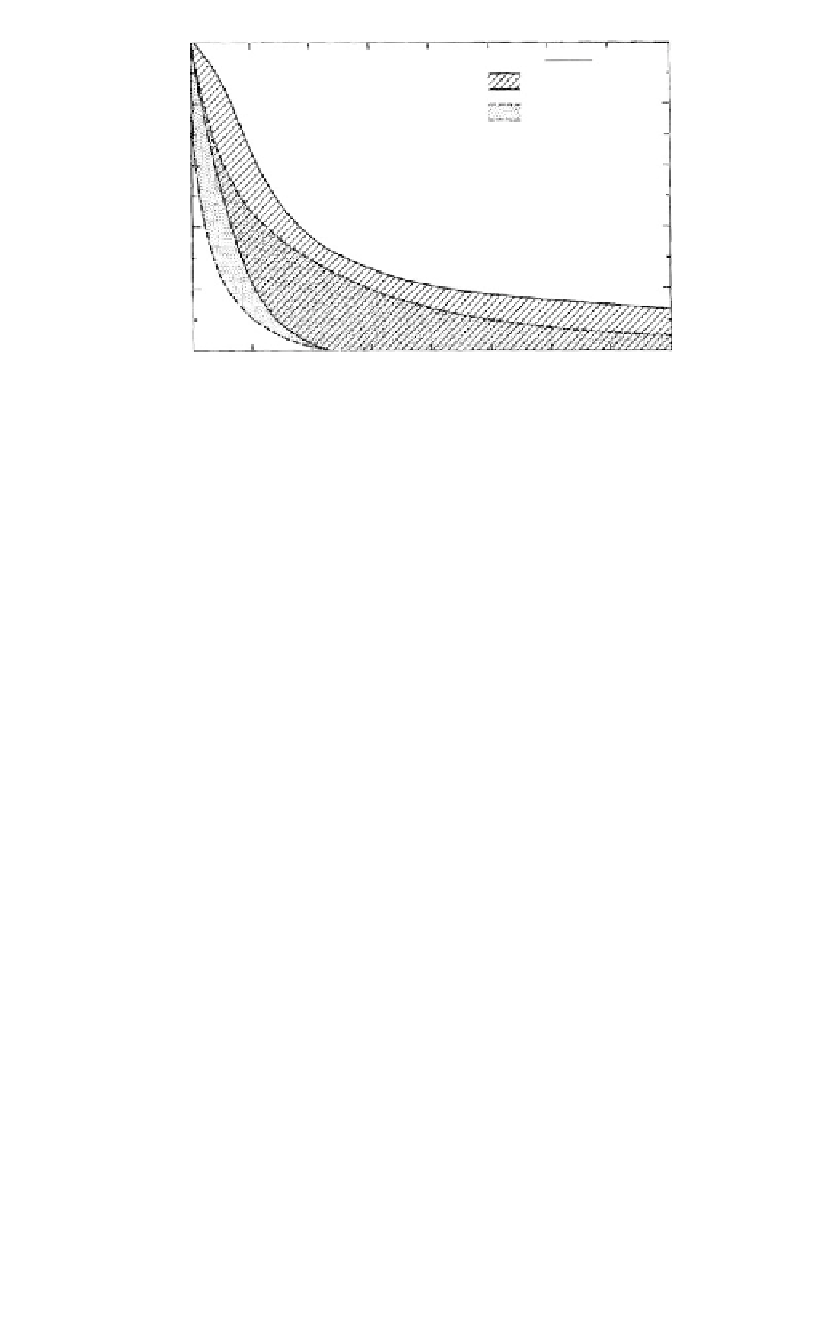Environmental Engineering Reference
In-Depth Information
1.0
LEGEND
GRAVEL (EVANS, 1987,
AND HYNES 1986)
SAND (TOKIMATSU AND
YOSHIMI, 1983)
0.8
0.6
0.4
0.2
0
1.0
1.2
1.4
1.6
1.8
2.0
2.2
2.4
2.6
FACTOR OF SAFETY AGAINST LIQUEFACTION, FS
L
Figure 12.32.
Method for approximate estimation of the residual excess pore pressure R
u
in non lique-
fied zones (Marcuson et al., 1990).
stress of the berm for clean sands, and the S
u(LIQ)
obtained without the berm should be
assumed to apply after the berm is built, unless sampling and laboratory testing indicates
otherwise.
Whether the mean lines or upper and lower lines are used for design, is for designers to
assess, based on the amount and quality of data available and the consequences of failure.
It would be wise to err somewhat on the conservative side given the uncertainty in the esti-
mated strengths.
12.5.3
Estimation of pore pressure increase due to cyclic loading
Saturated soils which are potentially liquefiable, but which have not been subject to suffi-
cient cyclic shear stress to reach a liquefaction condition, will develop positive pore pres-
sures during the cyclic loading of the earthquake. The amount of positive pore pressure
will depend on many factors relating to the soil and the cyclic loading.
For assessment of the post earthquake factor of safety the pore pressure in these zones can
be estimated from Figure 12.32, which relates the residual excess pore pressure ratio R
u
,
at the end of the earthquake loading to the factor of safety against liquefaction, FS calcu-
lated from Equation 12.24.
This procedure is used by USBR and US Corps of Engineers. For more critical projects,
carefully planned and executed cyclic laboratory tests should be used.
12.5.4
Post liquefaction limit equilibrium stability and deformation analysis
The post liquefaction stability is assessed as follows:
(a) Determine the zones which have liquefied (i.e. FS
1.0 in Equation 12.24) under the
earthquake loading using the methods in Section 12.4.3;
(b) Determine the liquefied shear strength (S
u(LIQ)
) for these zones using the methods
described in Sections 12.5.1 and 12.5.2;
(c) For potentially liquefiable soils with a factor of safety against liquefaction greater
than 1.0, determine the residual excess pore pressure as detailed in Sections 12.5.3;
(d) For clay soil zones in the embankment and foundation assign a strength and pore pres-
sure consistent with the soil's behaviour in static loading after being cracked and dis-

